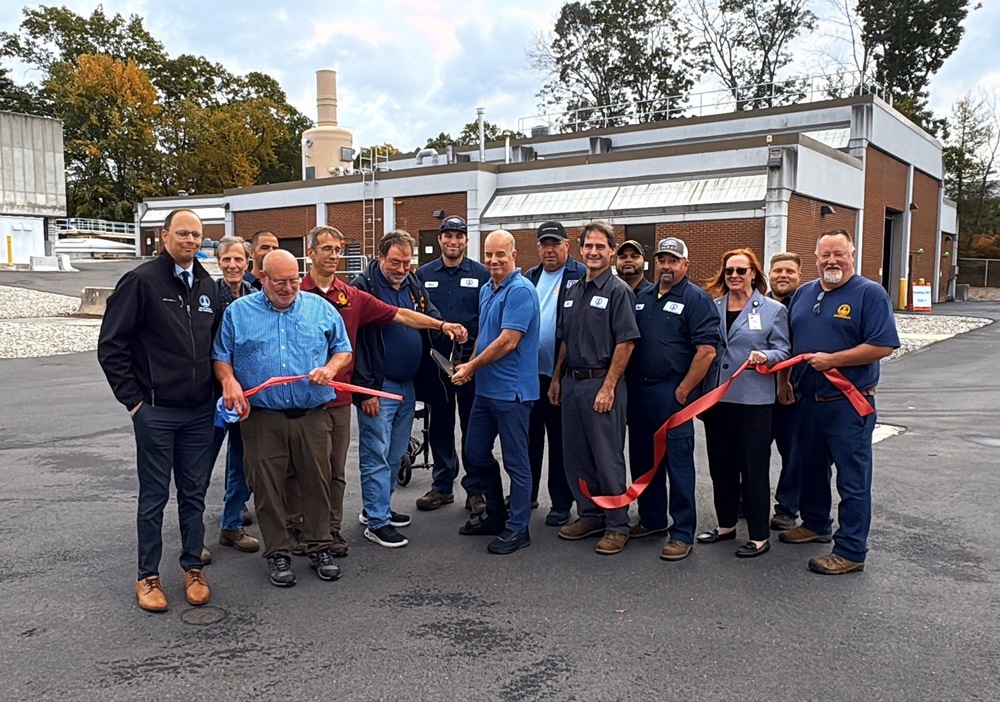Vernon Mayor Dan Champagne, members of the Town Council and residents of Vernon and surrounding communities got to visit and learn about the upgraded and modernized Water Pollution Control Facility on Windsorville Road on Wednesday. The multiyear upgrade project was recently completed.
Plant staff offered tours and explained each step in the process that transformers sewage into water clean enough to be discharged into the nearby Hockanum River.
About 4 million gallons of sewage from Vernon and parts of Ellington, Tolland, South Windsor and Manchester flow into the plant each day.
The $65 million project, which came in significantly under the $86 million approved by voters at a referendum in 2019, was necessary to bring the plant up to date with the latest standards and requirements and to increase the capacity the plant can handle to address future needs.
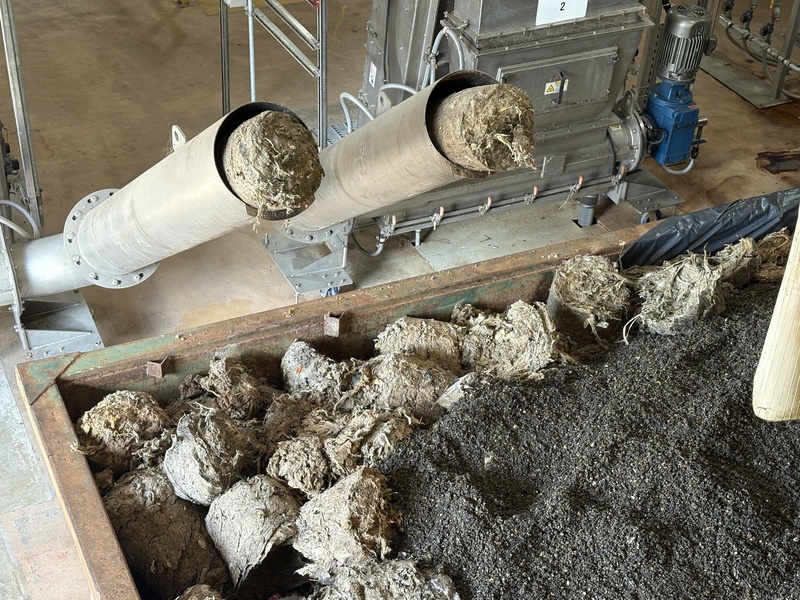 Caption: Cloth wipes and other grit removed from sewage at the renovated and upgraded Vernon WWater Pollution Control Plant. Plant staff urges people not to use "flushable" wipes because they can clog plumbing and damage the sewer plant.
Caption: Cloth wipes and other grit removed from sewage at the renovated and upgraded Vernon WWater Pollution Control Plant. Plant staff urges people not to use "flushable" wipes because they can clog plumbing and damage the sewer plant.
“This was a very important project that replaced aging equipment and infrastructure, and will ensure our sewer plant meets state requirements, and improves water quality in the Hockanum and Connecticut rivers, and Long Island Sound,” Mayor Dan Champagne said. “I am grateful for the work of our building committee, staff, engineers and contractors to control costs, reduce the impact on taxpayers and achieve a successful completion of the project.”
Wednesday’s open house was an important step in the project.
“We want the public to be able to come in and see how their tax dollars are being spent,” Mayor Champagne said.
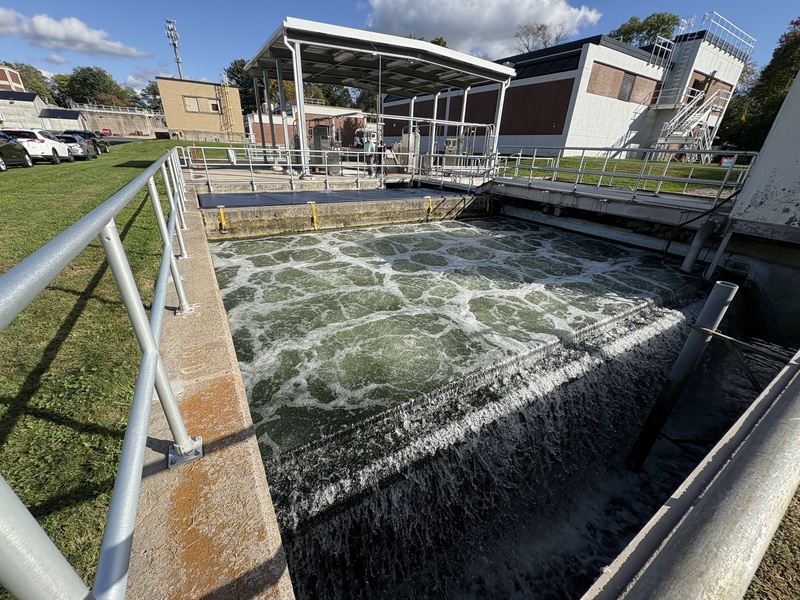 Caption: Water after disinfection and before discharge to the Hockanum River.
Caption: Water after disinfection and before discharge to the Hockanum River.
Wastewater goes through multiple steps in the plant as it is cleaned and disinfected.
Initially, grit and items such as cloth wipes are extracted from the sewage by special machines. About 30 cubic yards of such materials are removed each month and then trucked away to a special landfill.
These items must be removed first because they could damage pumps and other equipment in the plant. Plant staff urge people not to use cloth wipes because they not only threaten the plant, but homeowners’ plumbing systems.
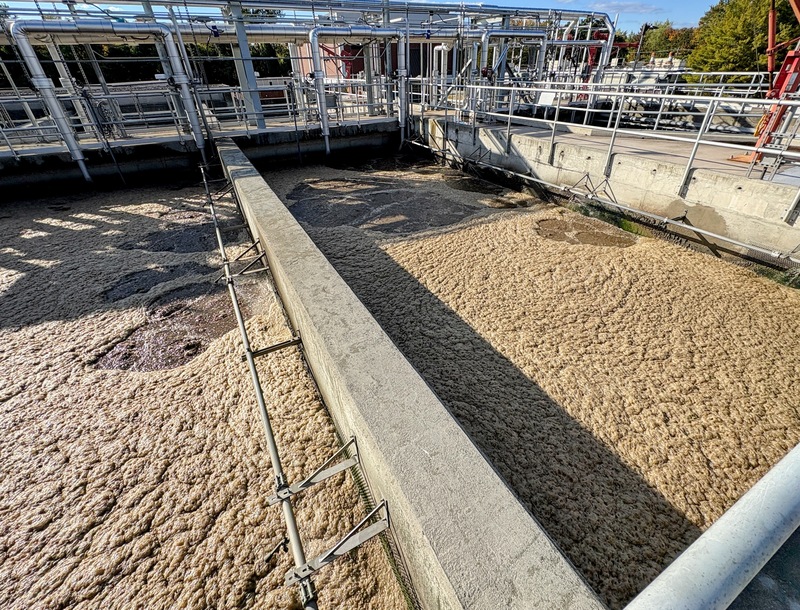 Caption: Sewage going through the treatment process.
Caption: Sewage going through the treatment process.
The only things that people should dispose of through their toilets are human waste and toilet paper, Vernon Water Pollution Control Director Rob Grasis said.
The wastewater then goes through a multistep process to begin separating solids from the water. Both chemicals and bacteria are used in the process.
The solids end up as sludge, which goes through a drying process before it is trucked to the Metropolitan District Commission for final disposal.
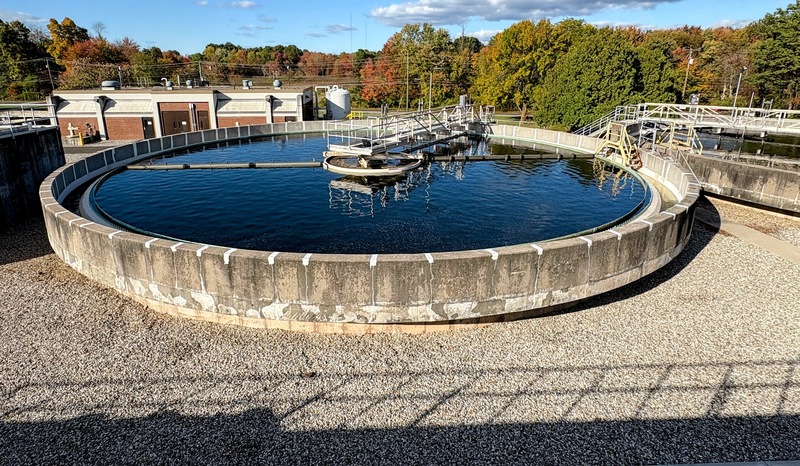 Caption: Secondary clarification tanks where solids settle to the bottom and the water flows over the top for further treatment. Solids are removed are recycled.
Caption: Secondary clarification tanks where solids settle to the bottom and the water flows over the top for further treatment. Solids are removed are recycled.
The remaining water goes through multiple steps to remove nitrogen and phosphorous and other materials, then goes through an ultraviolet disinfection process before it is released to the Hockanum River. Large blowers add oxygen to the water to aid in the treatment process.
The state-required improvements included equipment and systems to sharply reduce phosphorous and nitrogen discharges into the Hockanum River and ultimately Long Island Sound. Curiously, the plant was equipped to remove dyes from the textile mills that once existed in Vernon.
The upgrade will also dramatically increase the energy efficiency of the plant. A large generator was also installed to power the plant during power failures.
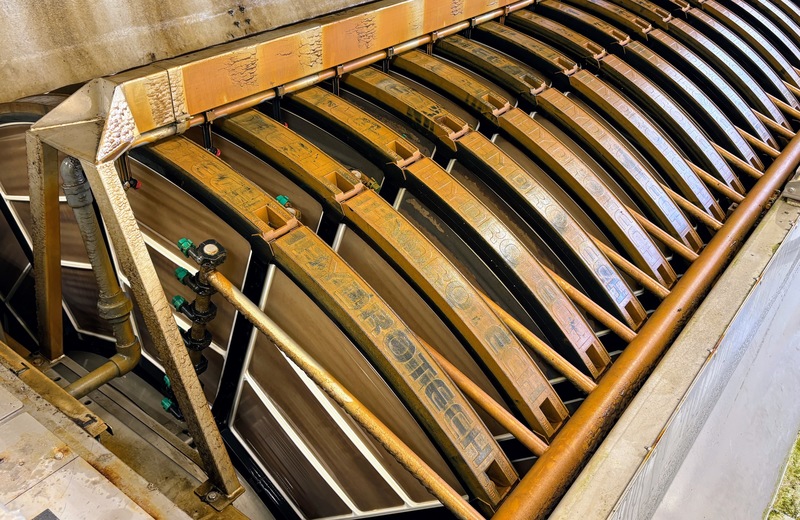
Caption: Water is pushed through the filters on the side of each wheel resulting in fin al removal of phosphorous. The next step for the water is ultraviolet disinfection before discharge to the river.
“Essentially we have a new plant that will enable us to meet all existing requirements and serve our community for generations to come,” Grasis said.
Vernon and the communities that benefit from the plant will pay a portion of the project cost. A Clean Water Fund grant paid about 30 percent of the project cost. The net cost to Vernon taxpayers is about $25 million. The project was bonded and will be paid for over time.
The project began in 2015 with a study, planning and design. Construction was completed in February.

